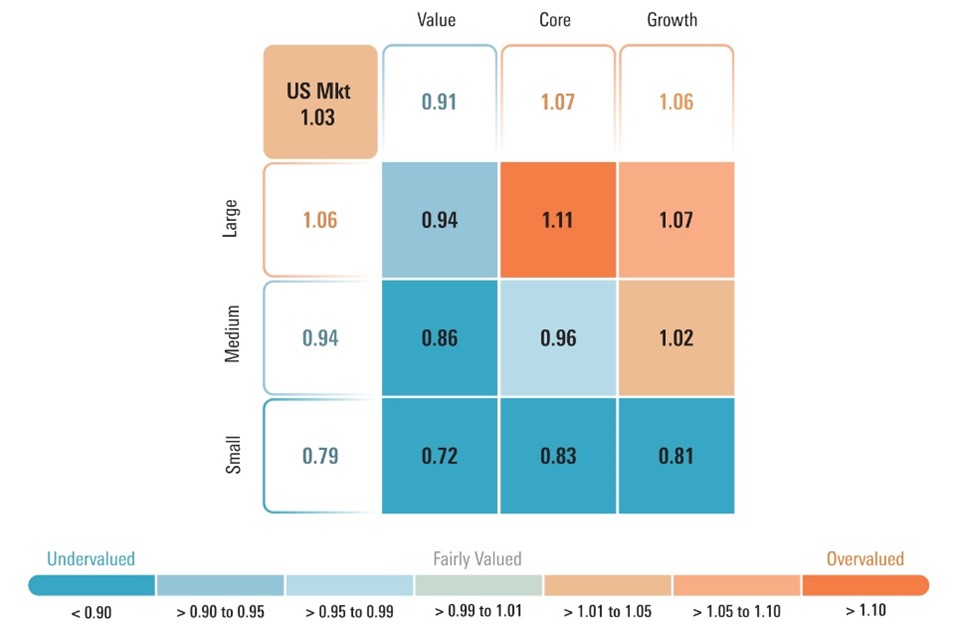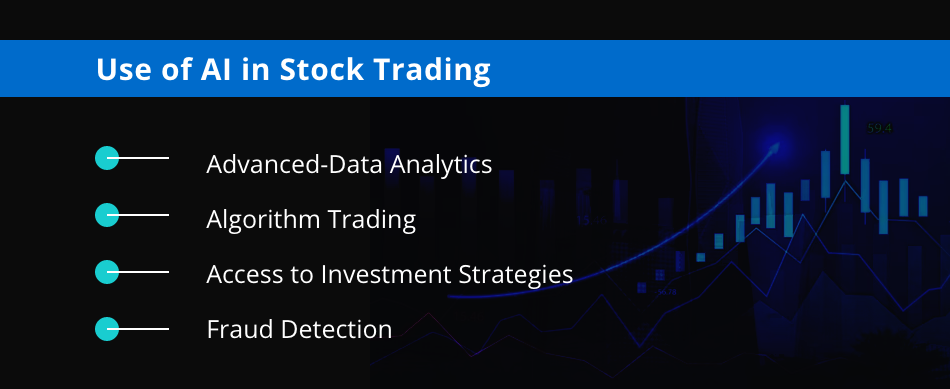20 Best Pieces Of Advice For Deciding On AI Stock Analysis Sites
20 Best Pieces Of Advice For Deciding On AI Stock Analysis Sites
Blog Article
Top 10 Tips For Assessing The Ai And Machine Learning Models In Ai Stock Analysing Trading Platforms
In order to get accurate information, accurate and reliable You must test the AI models and machine learning (ML). Overhyped or poorly designed models could lead to inaccurate predictions and even financial loss. We have compiled our top 10 suggestions for evaluating AI/ML-based platforms.
1. Learn the purpose of the model and its approach
Clear objective: Determine if the model is designed for short-term trading, long-term investment, sentiment analysis or for risk management.
Algorithm transparence: Check whether the platform provides information on the algorithm used (e.g. Regression, Decision Trees Neural Networks and Reinforcement Learning).
Customization - Find out if you can tailor the model to suit your strategy for trading and your risk tolerance.
2. Evaluation of Model Performance Metrics
Accuracy: Check the model's prediction accuracy and don't solely rely on this measurement, as it could be misleading in financial markets.
Precision and recall: Assess the accuracy of the model to identify true positives, e.g. correctly predicted price changes.
Results adjusted for risk: Examine the impact of model predictions on profitable trading despite accounting risk (e.g. Sharpe, Sortino, etc.).
3. Test the model using backtesting
Backtesting the model by using the data from the past allows you to compare its performance with previous market conditions.
Tests with data that were not being used to train: To avoid overfitting, test your model with data that has not been previously used.
Scenario-based analysis involves testing the model's accuracy under various market conditions.
4. Make sure you check for overfitting
Overfitting signs: Look for models that perform extremely well with training data, however, they perform poorly with unobserved data.
Regularization methods: Ensure that the platform does not overfit when using regularization methods such as L1/L2 and dropout.
Cross-validation (cross-validation): Make sure your platform uses cross-validation to assess the model's generalizability.
5. Review Feature Engineering
Relevant features: Find out whether the model is using relevant features (e.g. price, volume and technical indicators, sentiment data, macroeconomic factors).
Features selected: Select only those features that are statistically significant. Do not select redundant or irrelevant information.
Updates of dynamic features: Verify that your model is up-to-date to reflect the latest features and market conditions.
6. Evaluate Model Explainability
Model Interpretability: The model must give clear explanations of its predictions.
Black-box model: Beware of platforms which employ models that are overly complicated (e.g. deep neural networks) without describing tools.
User-friendly Insights: Verify that the platform presents useful information in a format that traders can easily understand and use.
7. Assessing the model Adaptability
Market shifts: Find out whether the model can adjust to changing market conditions, like economic shifts, black swans, and other.
Continuous learning: Check if the platform updates the model frequently with new data in order to improve performance.
Feedback loops - Make sure that the platform incorporates real-world feedback from users and feedback from the user to enhance the model.
8. Look for Bias & Fairness
Data biases: Make sure that the data used in training are representative and free from biases.
Model bias: Determine if you can actively monitor and mitigate the biases in the forecasts of the model.
Fairness. Check that your model isn't biased towards specific industries, stocks, or trading methods.
9. Evaluate Computational Efficiency
Speed: Find out whether your model is able to generate predictions in real-time or with minimum delay especially for high-frequency trading.
Scalability: Check if a platform can handle many users and huge data sets without affecting performance.
Resource usage: Examine to see if your model is optimized for efficient computing resources (e.g. GPU/TPU utilization).
Review Transparency Accountability
Model documentation: Ensure the platform provides detailed documentation on the model's structure and the training process.
Third-party auditors: Examine to see if the model has been subject to an audit by an independent party or has been validated by an outside party.
Error Handling: Check if the platform has mechanisms to detect and correct any errors in models or malfunctions.
Bonus Tips:
User reviews Conduct research on users and conduct case studies to assess the performance of a model in real life.
Trial period: You can use an unpaid trial or demo to test the model's predictions and the model's usability.
Customer Support: Ensure that the platform offers an extensive technical support or models-related assistance.
These tips will help you assess the AI and machine learning algorithms used by platforms for prediction of stocks to ensure they are trustworthy, transparent and compatible with your trading goals. Take a look at the most popular best ai for trading info for blog advice including stock ai, ai chart analysis, ai for investment, ai trading, ai investing platform, ai for investment, trading with ai, ai trade, AI stock picker, ai chart analysis and more.
Top 10 Ways To Assess The Transparency Of Ai Trading Platforms That Forecast Or Analyze Prices For Stocks
Transparency plays an important role in assessing AI-driven trading and stock prediction platforms. Transparency allows users to be confident in the operation of the platform, comprehend decisions, and verify accuracy of predictions. Here are the top 10 tips to determine the level of transparency that these platforms offer.
1. AI Models explained in depth
Tip Check to see whether the platform offers an explicit description of the AI models, algorithms and platforms that are used.
The reason is that understanding the basic technologies can help users determine its reliability.
2. Disclosure of Data Sources
TIP: Ensure that the platform discloses the sources of data it uses.
Why: Knowing the sources of data ensures that the platform has reliable and accurate information.
3. Performance Metrics & Backtesting Results
Tip Look for transparent reports of performance measures.
What is the reason? It allows users to verify historical performance and the effectiveness of their platform.
4. Updates, notifications and real-time updates
Tip: Assess whether the platform offers immediate updates and alerts about predictions, trades or system updates.
Why: Real-time transparency ensures users are always informed about critical actions.
5. Limitations and Open Communication
Tips Make sure the platform is clear about its risks and limitations with regard to trading strategies and forecasts.
What's the reason? Recognizing your limits will build trust with customers and allow them to make educated decisions.
6. Raw Data to Users
Tip : Determine if you are able to access raw data as well as intermediate results, which are utilized by AI models.
How do they do it? Users are able to do their own analysis and verify their predictions using the raw data.
7. Transparency of Costs and Fees
Make sure you read the terms and conditions on the platform you're considering.
Transparent pricing minimizes the risk of unexpected costs, and fosters confidence.
8. Regularly scheduled reporting and audits
Verify if a platform has regular reports and undergoes third party audits in order to check the efficiency of its operations.
Why independent verification is important: It increases credibility and guarantees accountability.
9. The ability to explain predictions
Tip: Determine whether the platform explains how it makes specific suggestions or predictions (e.g. decision trees, feature importance).
Why Explainability is a tool that helps users to understand AI-driven decision making.
10. User Feedback and Support Channels
TIP: Make sure that the platform has open channels for feedback and support from users and provide a clear response to users' concerns.
Why: Responsive communications demonstrate the commitment to the transparency of communications and satisfaction of users.
Bonus Tips - Regulatory Compliance
Verify that the platform adheres to the relevant financial regulations and discloses this compliance status. This adds another layer of credibility for the platform.
Through analyzing these capabilities, you will be able to decide if the AI trading platform or stock prediction are transparent. Then, you will be able to make well-informed choices and be confident in the capabilities of AI. Take a look at the top ai copyright signals blog for blog info including how to use ai for stock trading, AI stock analysis, AI stock investing, ai for trading stocks, ai investment tools, best stock prediction website, best ai penny stocks, ai copyright signals, ai options, stock predictor and more.